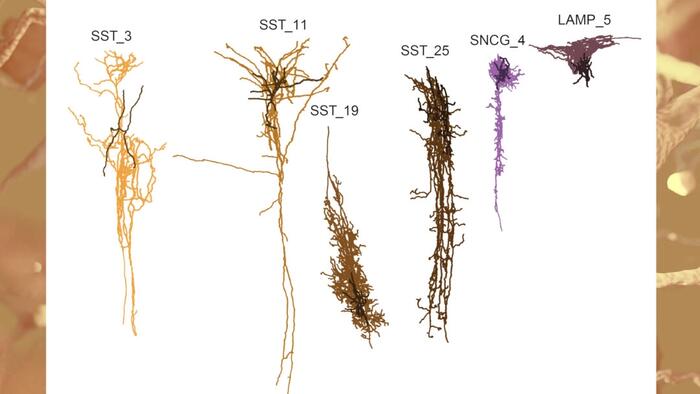Authored by George Citroner via The Epoch Times (emphasis ours),
Recent advancements in Alzheimer’s disease research show a promising shift in the understanding of the memory-robbing disorder, suggesting that crucial brain changes can occur decades before symptoms manifest.
A recent study has identified a two-phase progression of Alzheimer’s, highlighting a silent phase marked by subtle brain changes long before cognitive decline becomes apparent.
Alzheimer’s disease has a long pre-symptomatic period, with related changes taking place in the brain “10, 15, even 20 years before the onset of memory and thinking symptoms,” Igor Camargo Fontana, Alzheimer’s Association director of scientific conference programming, told The Epoch Times.
This research could also open new avenues for earlier detection and targeted treatments.
“One of the challenges to diagnosing and treating Alzheimer’s is that much of the damage to the brain happens well before symptoms occur,” Dr. Richard J. Hodes, director of the NIH National Institute on Aging, said in a statement. “The ability to detect these early changes means that, for the first time, we can see what is happening to a person’s brain during the earliest periods of the disease.”
The Early Phase: Silent and Gradual Damage
A recent National Institutes of Health (NIH)-funded study provided new insights into the progression of Alzheimer’s disease, potentially paving the way for earlier detection and treatment options.
The findings, published in Nature Neuroscience, say that Alzheimer’s affects the brain in two distinct phases: an early, silent phase characterized by subtle changes, and a later, symptomatic phase marked by widespread damage and the accumulation of amyloid plaques, long associated with the disorder.
Researchers have found that the initial phase of Alzheimer’s is insidious, unfolding slowly over time and occurring well before noticeable memory problems arise. During this phase, a gradual buildup of beta-amyloid plaques and tangles—hallmarks of Alzheimer’s—can be observed.
This early “quiet” phase is marked by subtle changes in brain cells, particularly inhibitory neurons, which may be among the first to become vulnerable, disrupting communication between brain cells, according to Fontana. These cells are mostly located in a brain region that is associated with memory, vision, and language.
The research specifically identified the death of somatostatin inhibitory neurons, a group previously underestimated in their role within Alzheimer’s pathology. This finding challenges the prevailing notion that the disease primarily harms excitatory neurons responsible for facilitating brain cell communication.
The Late Phase: Rapid Deterioration and Symptoms
The second phase of Alzheimer’s disease is starkly different. It’s characterized by rapid accumulation of amyloid plaques and tangles, significant neural damage, and cognitive decline symptoms such as memory loss and confusion, alongside increased levels of inflammation and cell death. Researchers have found that this deterioration occurs as part of a complex interplay of changes within neural circuitry.
Using advanced genetic analysis tools, researchers created a comprehensive map of the changes in the brain associated with Alzheimer’s. They specifically targeted the middle temporal gyrus, a region in the brain vital for language, memory, and visual processing, to illustrate its susceptibility to Alzheimer’s-induced damage.
The study suggests that in this later phase of the disease, other cells associated with inflammation—microglia and astrocytes—begin counteracting initial changes by releasing molecules or altering their structures, according to Fontana.
“Alterations in inflammatory cells and inhibitory neurons slowly evolve to demonstrate the well-known biological changes of Alzheimer’s,” he said, “including the accumulation of amyloid plaques and formation of tau tangle pathology, culminating in a terminal state.”
Implications for Diagnostics and Treatment
The study can have significant implications for early diagnosis and targeted treatments.
The results fundamentally alter scientists’ understanding of how Alzheimer’s harms the brain and will guide the development of new treatments for this devastating disorder, Hodes noted in a statement.
By recognizing distinct phases of the disease, researchers can better tailor diagnostics and therapeutics to the specific cellular changes taking place at various stages. This discovery may also facilitate earlier interventions and improve patient outcomes.
The “bigger picture” is that Alzheimer’s long pre-symptomatic period presents opportunities for early detection and intervention to prevent the onset of dementia symptoms, Fontana said. “If the findings in this new paper are confirmed by other labs,” he added, “it raises the question of whether effectively addressing the brain changes that happen in what the authors call the first ‘quiet’ phase can slow, delay or prevent the second, more destructive phase.”
Fontana stressed the importance of evaluating this “quiet” phase using a combination of diagnostic tools and investigating its associations with Alzheimer’s biomarkers, such as amyloid and tau.
Looking ahead, the study establishes a foundation for future research on Alzheimer’s disease and other dementias. By examining the relationships between different cell types and their roles in disease progression, scientists aim to identify protective factors and resilience mechanisms for potential therapies. Fontana noted that the Alzheimer’s Association is funding related research studies.
Loading…
Read the full article here

